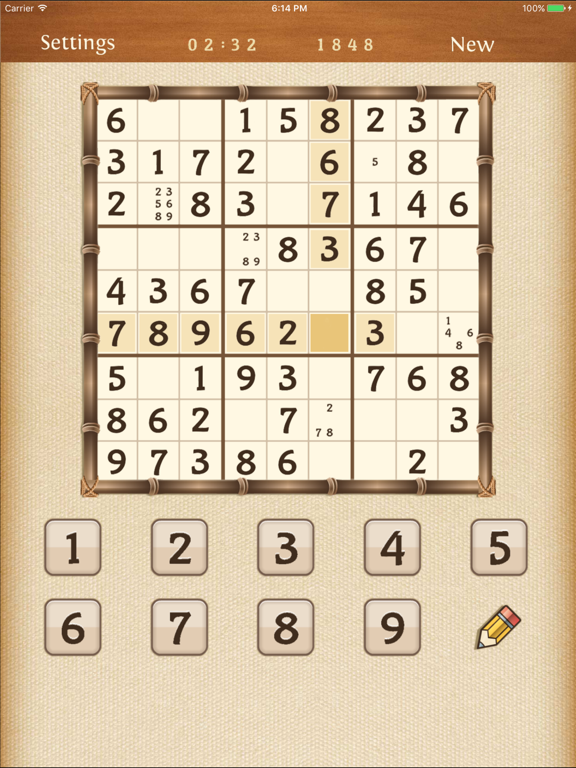
Tutorial:
The objective is to fill a 9×9 grid with digits so that each column, each row, and each of the nine 3×3 subgrids that compose the grid (also called "boxes", "blocks", "regions", or "subsquares") contains all of the digits from 1 to 9. The puzzle setter provides a partially completed grid, which for a well-posed puzzle has a unique solution.
History:
The modern Sudoku was most likely designed anonymously by Howard Garns, a 74-year-old retired architect and freelance puzzle constructor from Connersville, Indiana, and first published in 1979 by Dell Magazines as Number Place (the earliest known examples of modern Sudoku).[1] Garnss name was always present on the list of contributors in issues of Dell Pencil Puzzles and Word Games that included Number Place, and was always absent from issues that did not.[10] He died in 1989 before getting a chance to see his creation as a worldwide phenomenon.[10] If Garns was familiar with any of the French newspapers listed above is unclear.
The puzzle was introduced in Japan by Nikoli in the paper Monthly Nikolist in April 1984 as Sūji wa dokushin ni kagiru (数字は独身に限る?), which also can be translated as "the digits must be single" or "the digits are limited to one occurrence" (In Japanese, dokushin means an "unmarried person"). At a later date, the name was abbreviated to Sudoku (数独) by Maki Kaji (鍜治 真起 Kaji Maki?), taking only the first kanji of compound words to form a shorter version.[10] "Sudoku" is a registered trademark in Japan and the puzzle is generally referred to as Number Place (ナンバープレース Nanbāpurēsu?) or, more informally, a portmanteau of the two words, Num(ber) Pla(ce) (ナンプレ Nanpure?). In 1986, Nikoli introduced two innovations: the number of givens was restricted to no more than 32, and puzzles became "symmetrical" (meaning the givens were distributed in rotationally symmetric cells). It is now published in mainstream Japanese periodicals, such as the Asahi Shimbun.
The Times of London began featuring Sudoku in late 2004 after a successful appearance in a local US newspaper, from the efforts of Wayne Gould, and rapidly spread to other newspapers as a regular feature. Gould devised a computer program to produce unique puzzles rapidly.



